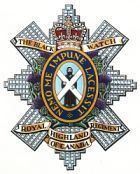 | ||
Black Friday was the nickname given by 1st Battalion The Black Watch (Royal Highland Regiment) of Canada to the date 13 October 1944. On that day, during World War II's Battle of the Scheldt in The Netherlands near Hoogerheide, the regiment attacked German positions on a raised railway embankment across 1,200 yards of open beet fields and suffered 145 casualties, including 56 dead, among them all four company commanders. Twenty-seven were taken prisoner. One company of 90 men was reduced to just four survivors.
Contents
Background
By September, 1944, it had become urgent for the Allies to clear both banks of the Scheldt estuary in order to open the port of Antwerp to Allied shipping, thus easing logistical burdens in their supply lines stretching hundreds of miles from Normandy eastward to the Siegfried Line. Since the Allied forces had landed in Normandy, France on D-Day, June 6, 1944, the British Second Army had pushed forward into the Low Countries and captured Brussels and Antwerp, the latter with its ports still intact. But the advance halted with the British in possession of Antwerp, while the Germans still controlled the Scheldt Estuary.
Nothing was done about the blocked Antwerp ports during September because most of the strained Allied resources were allocated to Operation Market Garden, a bold plan for a single thrust into Germany which began on September 17. In the meantime, German forces in the Scheldt were able to plan a defense.
In early October, after Market Garden had failed with heavy losses, Allies forces led by the First Canadian Army set out to bring the Antwerp ports under control. But the well-established German defenders staged an effective delaying action. Complicated by the waterlogged terrain, the Battle of the Scheldt proved to be an especially gruelling and costly campaign. Historians have largely ignored it until recent years.
After five weeks of difficult fighting, the First Canadian Army, bolstered by attached troops from several other countries, was successful in winning the Scheldt after numerous amphibious assaults, crossing of canals, and fighting over open ground. Both land and water were mined, and the Germans defended their retreating line with artillery and snipers.
The Allies finally cleared the port areas on November 8, but at a cost of 12,873 Allied casualties (killed, wounded, or missing), half of them Canadians.
The battle
An area known as "the Coffin" due to its shape on topographical maps was held by entrenched Germans of Battle Group Chill, holding the mouth of the Beveland isthmus. The Black Watch were tasked with attacking northward and cutting the land links between the mainland and the isthmus.
"C" Company, was 30 minutes late at the start of the operation due to small-arms fire delaying their advance, and the supporting artillery attack was therefore ill-timed.
Operation Angus continued with a second attack and a third was prepared, to be led by Wasp flame-throwers.
